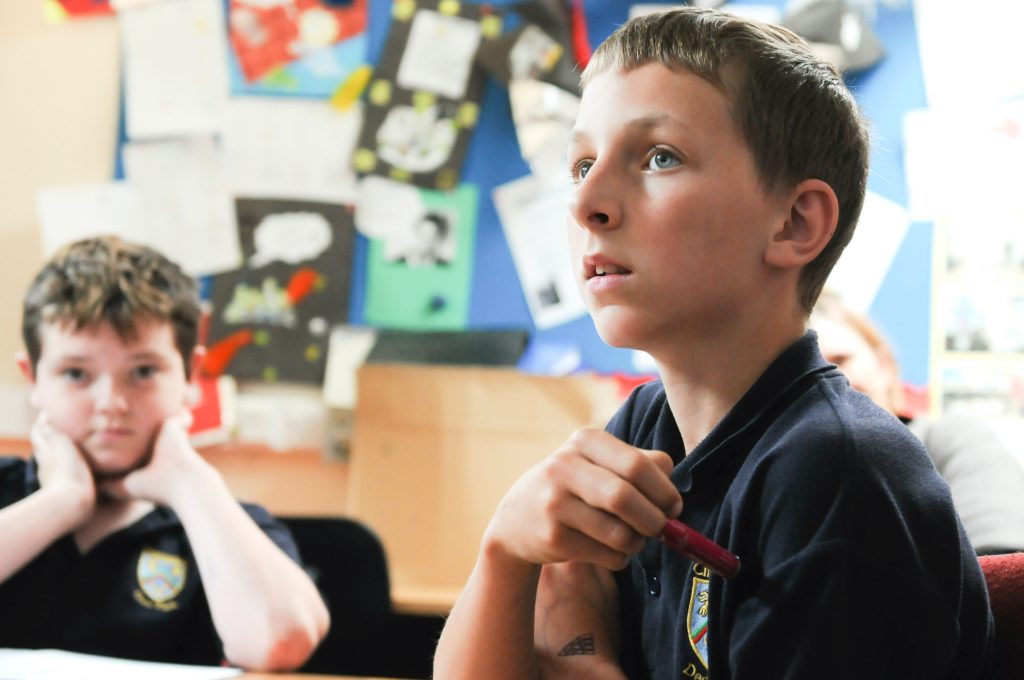Let’s say you’re convinced that hands up for answering questions is a bad thing (see last blog) and getting children to answer questions with a partner will help children pay attention in lessons.
Let’s say you think it really important that all the children in your school answer every question with a partner – so they have to think out loud, reason, argue, disagree, confirm an opinion – and respond to every question, in every lesson throughout the day.
Teachers will not only have to become adept at asking challenging, thought provoking questions (that’s a big blog for another day) but also, more prosaically, know how to stop children quickly, quietly and calmly. This might be easy for an experienced teacher but a nightmare for a newly qualified teacher.
Why struggle?
It’s easier to continue using the age-old hands up method and keep children silent for most of the lesson than stopping children 10 times in a lesson. Why struggle? Why set your heart racing when every time you want children to stop they carry on talking or don’t even turn back to look at you? Who would want to lose their temper every time children talk? ‘If you can’t stop when I want you to, we won’t do this anymore.’ And they won’t.
Partner talk is impossible if you can’t get them to stop quickly. It’s the first thing that you have to get right. So what’s the quickest way?
A school-wide approach
Partner talk isn’t possible without team work. Everyone needs to use the same method of stopping children whoever they are: teacher, TA, supervisor, coach – and most importantly, the headteacher. Children must know what is expected of them in every lesson, irrespective of who is teaching them.
Read Write Inc. schools use the same stop signal. I’ve copied it from the Scouts/Guides, although I only found out about it 25 years into my teaching career. It’s such a simple and polite signal. The teacher raises her hand when she wants attention, and children raise theirs in return and stop talking. The more quickly they raise their hands the quicker the lesson moves on. Teachers get potential ‘slow responders’ to start the signal with them and acknowledge their help quietly.
There’s no shouting, shushing or nagging. Children stop in a calm manner, ready for the teacher to select a couple of children to feed back ideas to the group.
I’ve renamed it the Team Stop Signal, because everyone helps each other get quiet so the lesson can move on. (See steps below)
However, it’s not just what you do, its what you don’t do. Clapping, clicking, singing rhymes, shaking maracas, shouting, shushing, singing, dance routines, counting back, turning lights on and off…They’ve all got to go. It doesn’t matter if a teacher prefers their own particular method – they need to use the Team Stop Signal for the greater good of the team – staff and children.
Many schools use the Team stop signal so effectively they’ve practiced it until it works in assembly, during transitions, at lunchtime, on trips – and in staff meetings.
It means that a new teacher, TA, supervisor doesn’t have to go through so much pain and children don’t have to learn a new system with every teacher.
It’s the first step towards teamwork. And a huge step to getting children to pay attention in every lesson.
Practise the Team Stop Signal until children respond in under five seconds – in silence.
1. Hold one hand in the air with a flat palm. Do not clap or talk.
2. Scan the room to check every child has responded.
Every child:
- Raises one hand in response
- Checks their partner and others at their table have also raised their hands – gently tapping an arm if necessary
- Looks attentively at you – eyes locked into yours to show they are ready to listen
- Sits up tall, beside their partners.
3. Lower your hand and scan to check everyone is looking at you attentively, ready to listen. Do not start talking until you have their attention.

